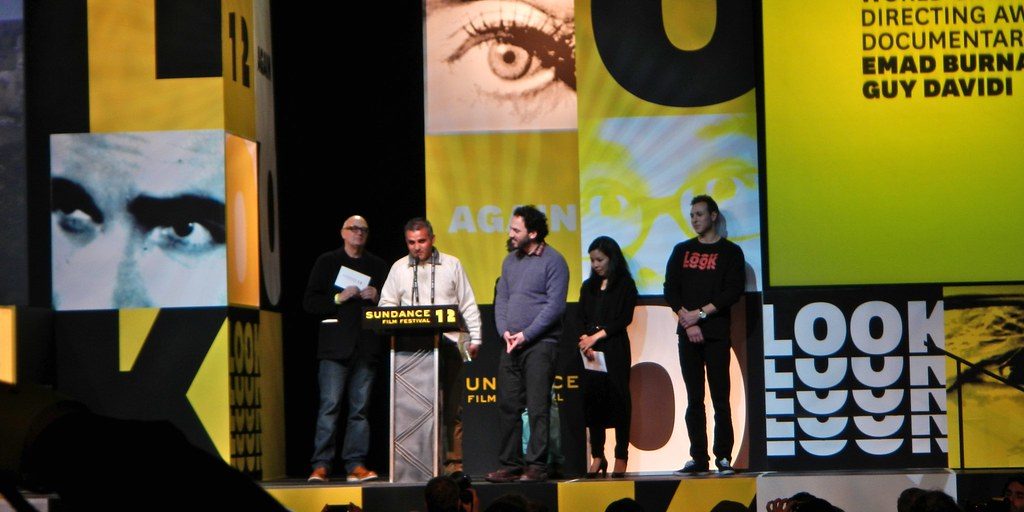Five Broken Cameras: The importance of documenting history
It is always important, I feel, to note how history is recorded and what it is recorded on. My favourite example is cavemen leaving behind paintings of hands on walls. Though the makers of these images die and fade, their imprints last. In a similar vein, the recordings of revolutions and the struggles of humanity have been well and widely documented, from Anne Frank’s diary to Blackout Tuesday marking the Black Lives Matter protests of 2020.
Taking these ideas of the recording of history, of events passed, of documenting struggles and revolutions, I would like to turn to the conflict and suffering that is being endured by the Palestinian people in Gaza and the West Bank.
Despite what Western media would have their readers believe, the situation in the Gaza and the fight for Palestinian freedom of movement has been raging since – depending on your source and beliefs – 1948. The passing of the 7th of October only marks a year of the new wave of the conflict.
In 2005, Palestinian farmer Emad Burnat picked up a relatively cheap home camera to create home movies, in particular to document the birth of his fourth son. Unfortunately, and perhaps somewhat inevitably, Burnat ended up documenting the burgeoning Israeli settlements on his land. In the same year his son was born, the neighbouring Israeli settlement adjacent to Burnat’s farm began bulldozing olive groves to build a barrier between the two lands. In response, Burnat points the camera their way. The result is the film Five Broken Cameras.
In true rebellious fashion, as each camera is shot, destroyed by the Israelis, Burnat buys a new one and continues filming
Over the next five years, Burnat films as more and more of the Palestinian land is encroached upon to make way for the Israeli village and barrier. Burnat remains indelibly non-violent, as his two closest friends begin peacefully protesting against what is happening. The Israelis show up with tanks and guns, the Palestinians respond with chants, singing and handmade signs. The film is structured around, and shot on, five different cameras. In true rebellious fashion, as each camera is shot, destroyed by the Israelis, Burnat buys a new one and continues filming. Five years of struggle, five broken cameras, five grainy cinematic eyes which cry the pain of a nation suffering, choking.
This film stands out to me, not least because of the Palestinian struggle at the forefront of the story. Burnat’s documentary, for me, served to put a face to the Palestinian struggle, decades before the concurrent documentary-like efforts of Bisan Owda (@wizardbisan), Motaz Azaiza (@azaizamotaz9) and Hind Khoudary (@Hind_Gaza). To see the Palestinian struggle so clearly, documented so well is rattling. The film feels so real, so close.
Burnat’s documentary toes the line between the personal and political, one scene shows his son gurgling in a cot, sharply contrasted with later scenes of violence and anger. I remember watching the opening scenes and realising Burnat’s son, the reason the film exists, was born only a year after I was. Imagining my home movies of me as a baby being interrupted by armed soldiers knocking at the door in the middle of the night sends chills down my spine, as it should yours. Difference being, this is our imagination, their reality.
Behind the statistics and the face of politics are people who live and survive as we do
To return to the ideas I posited at the start of this article, over the last year and two months, journalists such as Bisan and Motaz have posted endlessly about their struggle, their survival, and their people. Twenty years before them, with a handful of rudimentary home movie cameras, Burnat did the same thing. I read these films, social media posts, all of them, as the equivalent of handprints on a cave: a record of human presence and struggle. Behind the statistics and the face of politics are people who live and survive as we do.
As the Israeli occupation continues, I wonder what other images will emerge from Palestine. How many more voices and images will pour over the edge of the country and pool on our screens until empathy for the Palestinian struggle is universal? There are small developments, steps in the right direction. Until the Palestinian suffering is cut short, it is our duty to keep our eyes on Gaza and Palestine, to recognise, watch and absorb the images (handprints) that emerge, and act, not hope, for a better tomorrow.

Comments